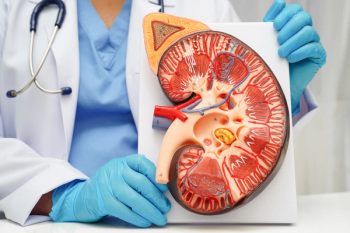
Out-of-Pocket Expenses of Chronic Heart Disease Burdensome for Low-Income Families
Low-income families can experience catastrophic financial burden from cumulative out-of-pocket expenses for atherosclerotic cardiovascular disease treatments.
Cumulative out-of-pocket expenses for chronic heart disease treatments can be financially burdensome for low-income families even if they have health insurance, according to preliminary research presented at the American Heart Association’s Quality of Care and Outcomes Research Scientific Sessions 2018.
In the study, the researchers evaluated the effects of out-of-pocket health expenses for treating atherosclerotic cardiovascular disease on low-income families, which included an income of $20,000 to $24,250 per year for a family of 4, from 2006 to 2015.
The researchers used data from 2006 to 2015 to assess the annual inflation-adjusted out-of-pocket expenses for families with 1 or more members with atherosclerotic cardiovascular disease and compared this against annual family incomes. Out-of-pocket expenses included insurance premiums and deductible payments, expenses for hospitalizations and clinic visits, and prescription costs.
Using data from the Medical Expenditure Panel Survey, the researchers determined the actual out-of-pocket expenses for treatment of atherosclerotic cardiovascular disease
For the study, the researchers identified 33,521 adults over 18 years of age with atherosclerotic cardiovascular disease, from 20,600 families in the study database. The researchers defined high health expenses as out-of-pocket expenses of more than 20% and catastrophic health expenses as out-of-pocket expenses of more than 40% of family income.
According to the findings, 1 in 4 low-income families with a member with atherosclerotic cardiovascular disease experienced a high financial burden, and 1 in 10 experienced catastrophic health care expenses, even with insurance coverage. Low-income families were 3 times more likely to experience catastrophic medical expenses than middle- to high-income families, the researchers noted.
“While more low-income families gained insurance coverage over the period of time for which we evaluated the expense data, those with insurance had high rates of out-of-pocket expenses that frequently exceeded expenses of those without insurance,” Rohan Khera, MD, lead author of the study, said in a press release.
Overall, the findings indicate that the quality of insurance provided to patients does not sufficiently cover their medical expenses To reduce economic disparities, the quality of insurance coverage for low-income families needs to be improved, Dr Khera concluded.
Reference
Out-of-pocket expenses for chronic heart disease care inflict heavy financial burdens for low-income families; even those with insurance [news release]. AHA’s website.
Newsletter
Stay informed on drug updates, treatment guidelines, and pharmacy practice trends—subscribe to Pharmacy Times for weekly clinical insights.
















































































































































































































